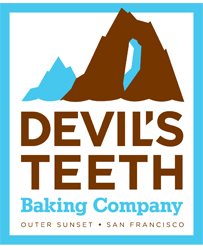The real estate market in 2008 finally slowed from previous years, resulting in lower prices and less sales just about everywhere. Even San Francisco started to feel the economic downturn.
Median and average prices in the Sunset, as compared to last year, were lower each quarter and the number of sales also decreased slightly from 2007. The Sunset Home Sales Comparison Table shows the results in 2008 as compared with prior years. The data was gathered from the San Francisco Association of Realtors’ Multiple Listing Service and consists of single-family home sales in the Sunset, Parkside and Golden Gate Heights areas.
In 2008, there were 409 sales versus 427 for 2007 and 498 for 2006, a decrease of 4.2 percent from 2007 and a large drop of 17.9 percent from 2006. This is the lowest number of sales in the Sunset for the past 11 years since I started keeping track of these statistics.
The number of sales decreased because of lower consumer confidence, with bad economic news hitting on a daily basis, and owners not selling because they perceive the market as being very bad and they did not want to make a large financial decision at this time.
The amount of marketing time to sell a home increased to 40 days in 2008, versus 37 days in 2007 and 34 days in 2006, an increase of three days, or 8.1 percent, from 2007 and six days, or 16.7 percent, from 2006. This reflects the fact that homes were selling at a normal pace with some marketing time instead of the panic buying we saw during the peak real estate years.
The annual median price comparison shows a 3.7 percent decrease year over year versus a 2.7 percent increase from 2006 to 2007.
The average sales price decreased 5.6 percent during the year, suggesting that home prices held their own in the Sunset area as compared with the rest of the Bay Area, where some areas experienced 40 percent price declines.
So, how this can we interpret this information? Despite all the bad news – the battering of the stock market, the rise in the unemployment rate, subprime mortgage problems, major bank failures and plummeting consumer confidence ratings – our home prices in the Sunset area held up extremely well because the Sunset is still a desirable area to raise a family, it is convenient to transportation and it has all the amenities that homeowners like to have in a neighborhood.
Thus, even during tough economic times, people are staying in their homes, keeping the real estate demand and supply in balance, leading to stable prices.
What is in store for 2009? I think it will be more of the same with real estate taking slightly longer to sell, and prices being flat or slightly down.
On the national level, the Federal Reserve Banks have been decreasing short-term rates and printing money for the large bailout. We at the real estate industry have been lobbying for part of the bailout money to be used to subsidize new home purchases in the form of lower interest rates to stimulate real estate sales. We believe we will be successful sometime in the first quarter of 2009. Inflation is currently under control and the high number of foreclosures should peak and decrease in 2009. We are hoping for a stock market rebound.
The good news for us in real estate is that mortgage rates have been steady all year and are anticipated to decrease slightly this year.
Locally, the demand in San Francisco and the Sunset District will continue to be desirable and strong, and supply is still ever so limited.
As you can see, with the least amount of homes selling in the Sunset annually for the past decade, demand still outweighs supply and though we do not see the torrid pace of the peak years, our real estate market is still active and should be fine.
Thus, my prediction for 2009 is that we will have a balanced real estate market, where the negotiating power will be fairly split between buyers and sellers, a continuing shortage of good inventory and level prices.
So, if you are contemplating buying for the long-term, or trading up, this will be an ideal year to do so.
John M. Lee is the president elect of the San Francisco Association of Realtors for 2009. If you have any questions, call him at (415) 447-6231.





















